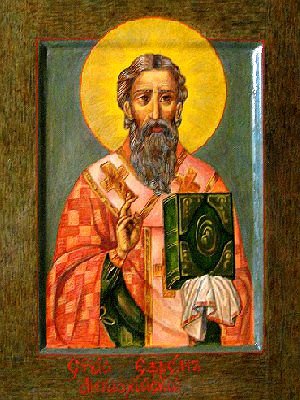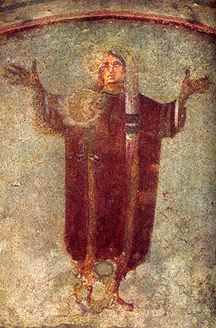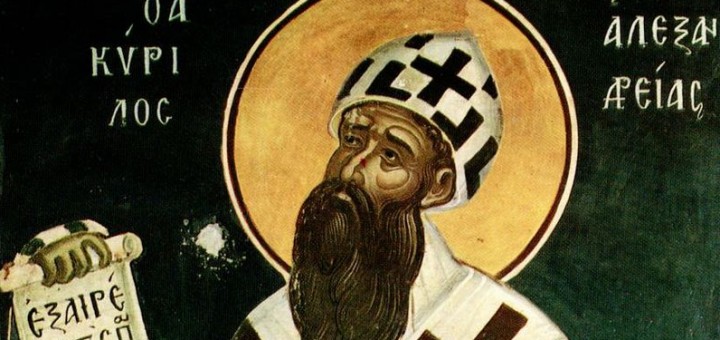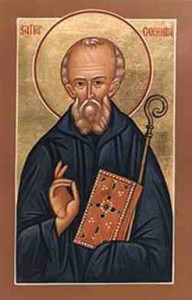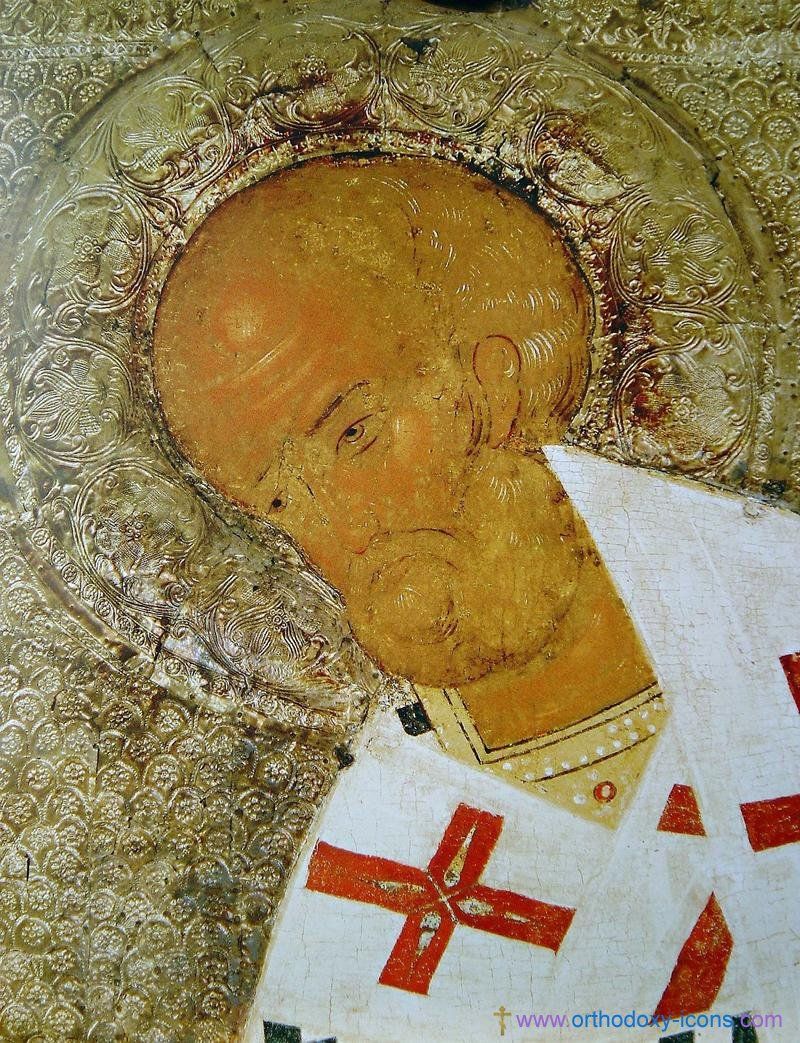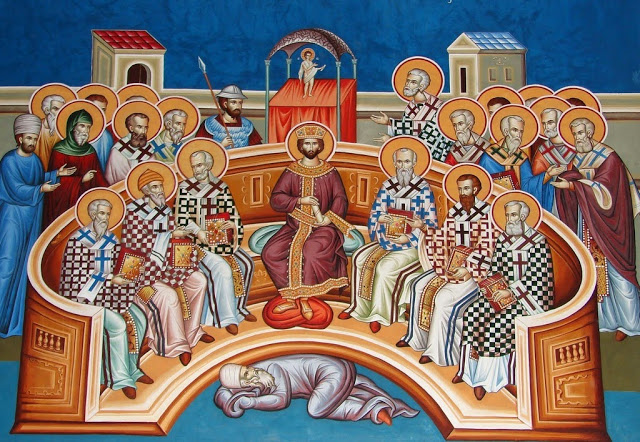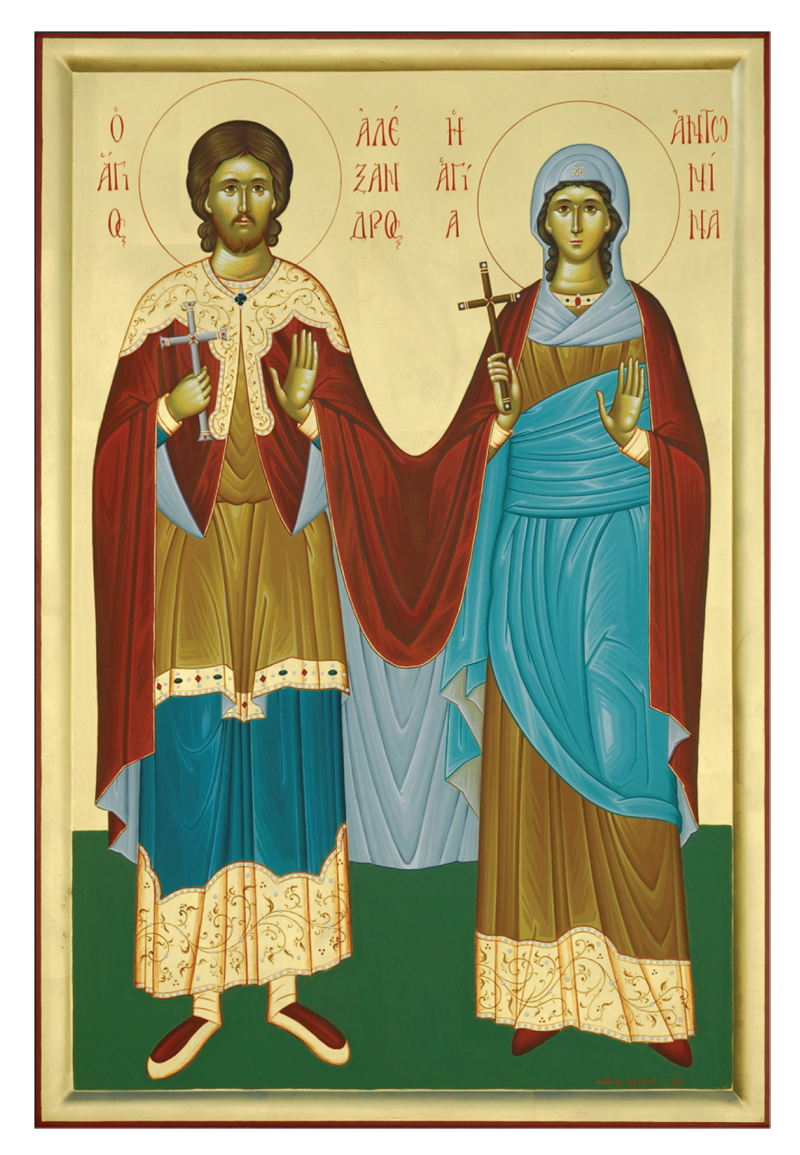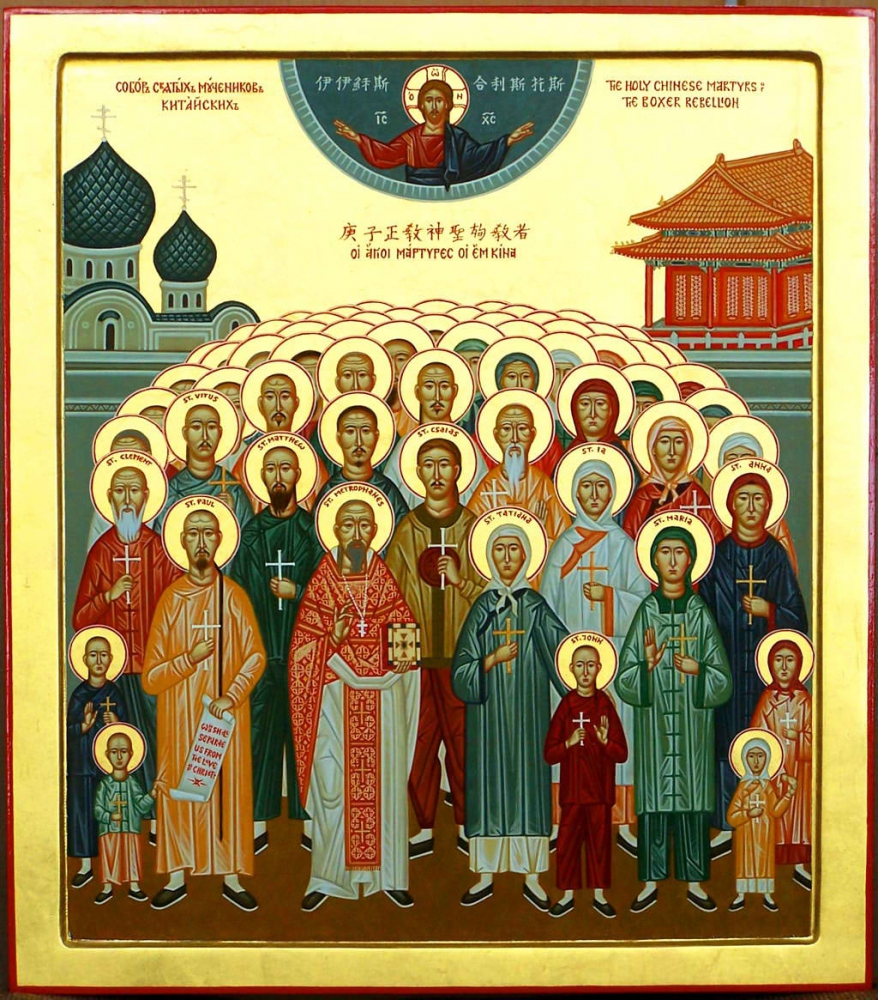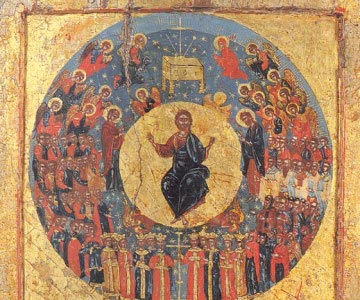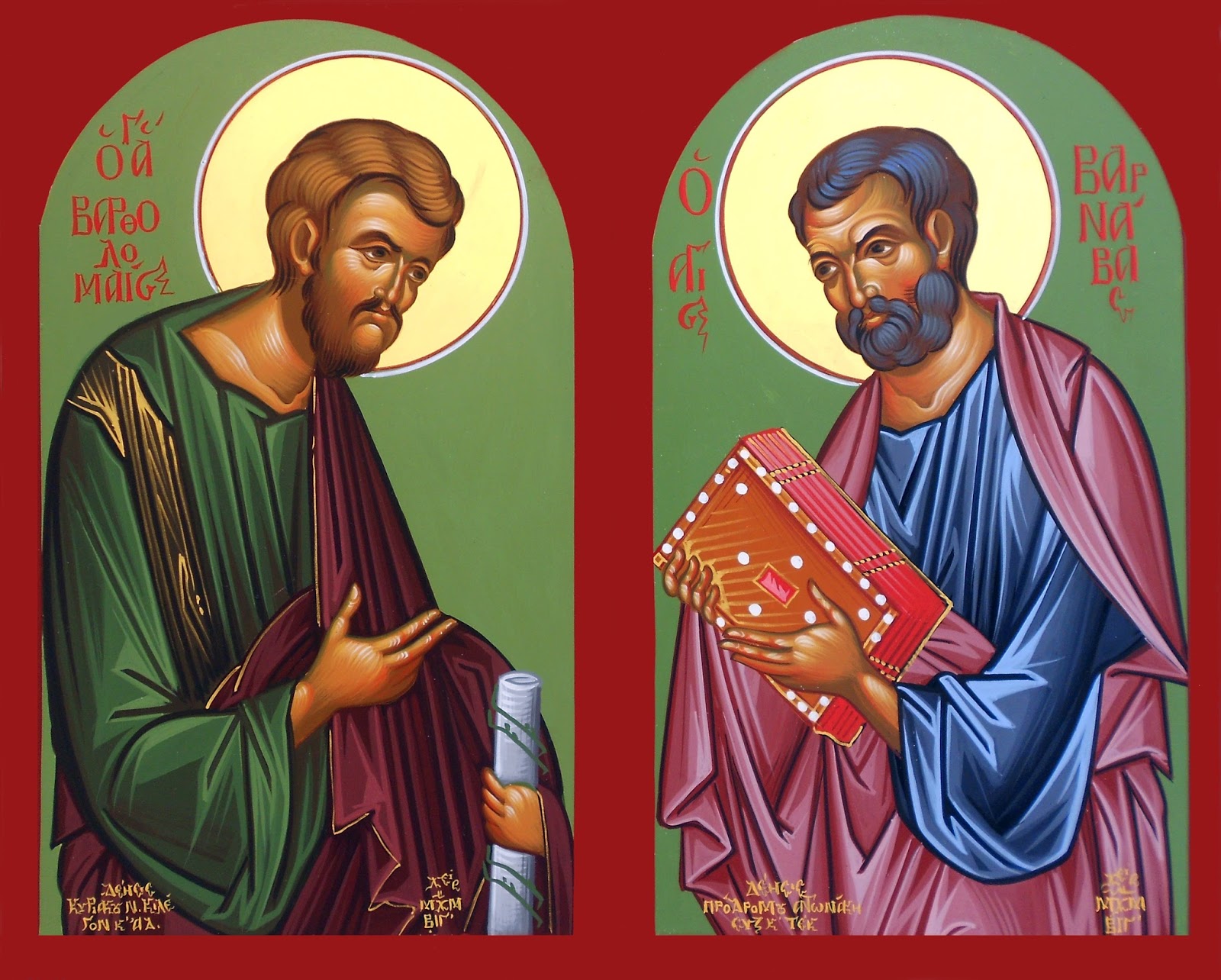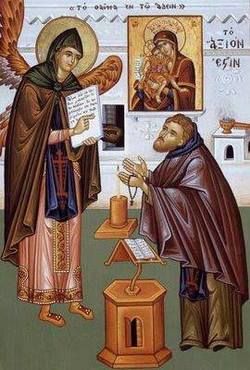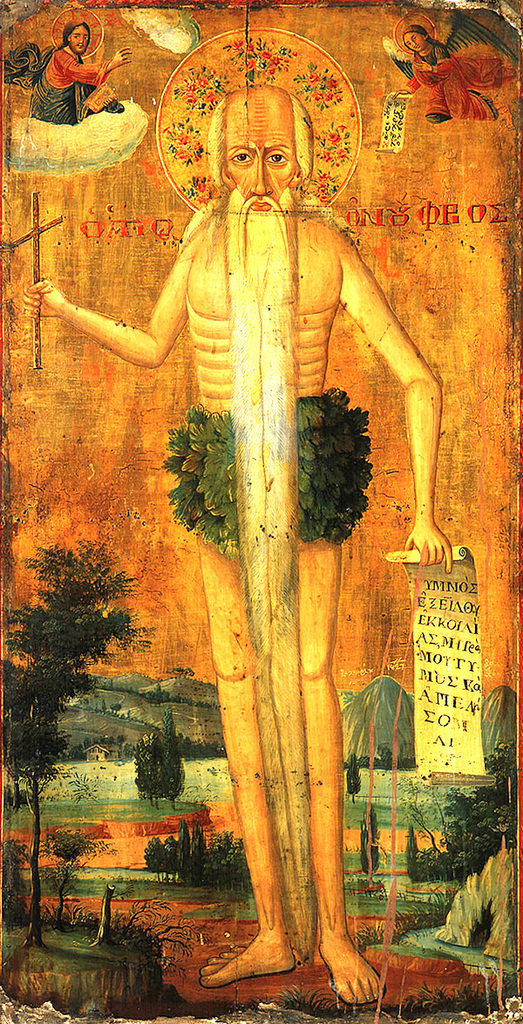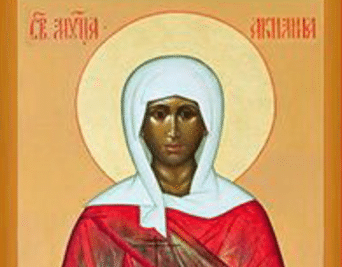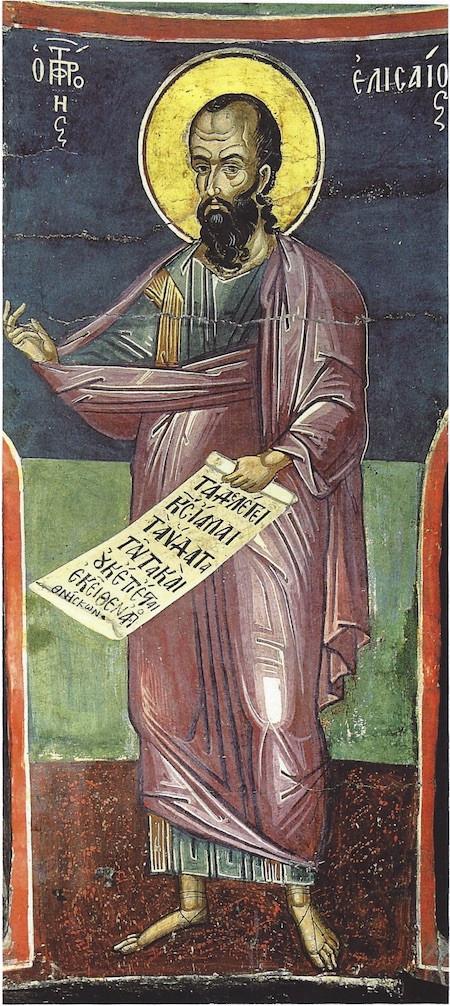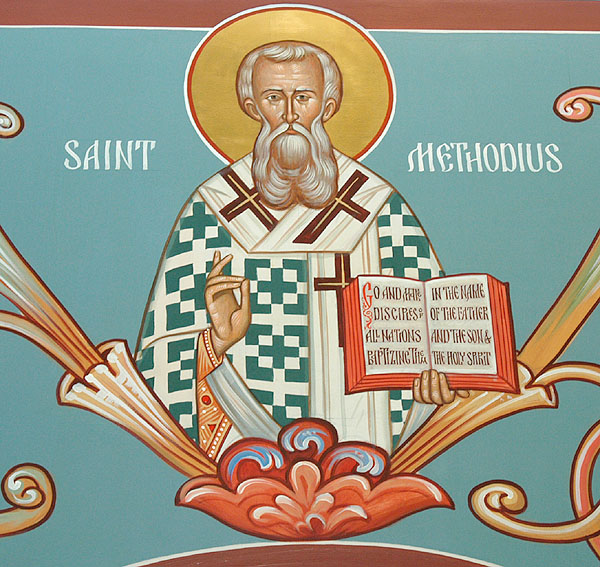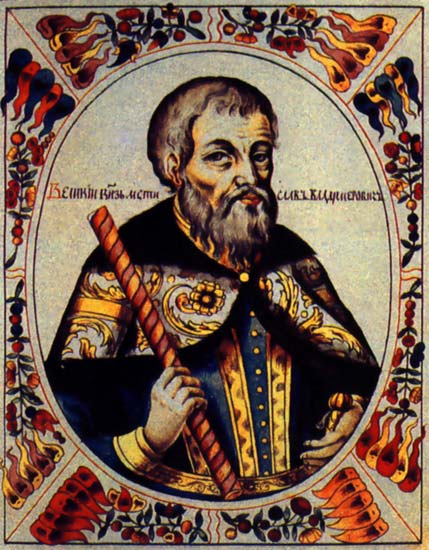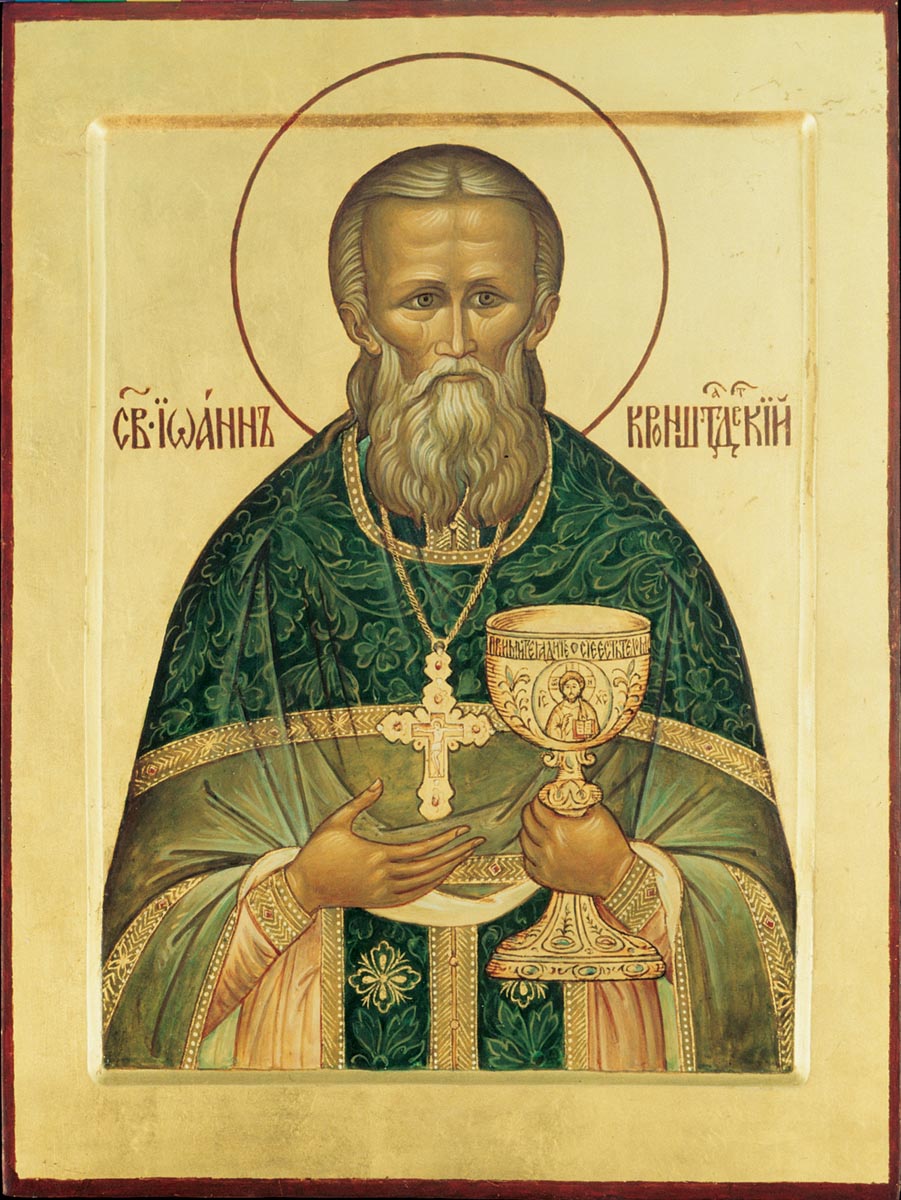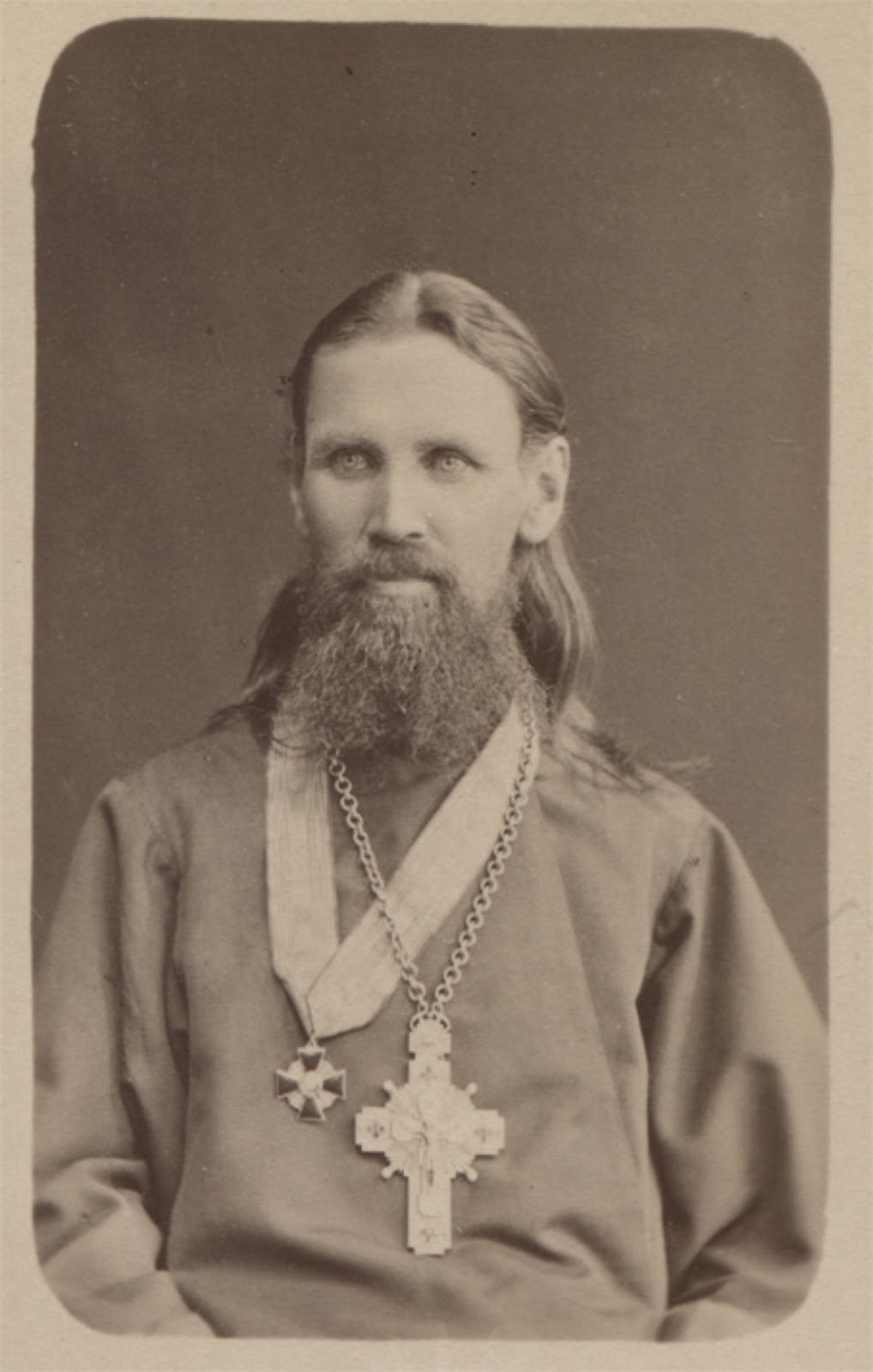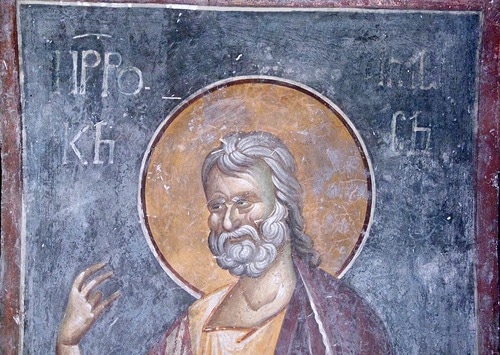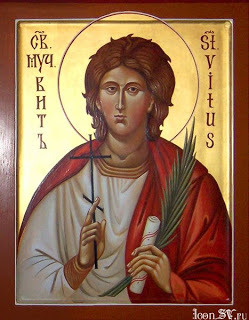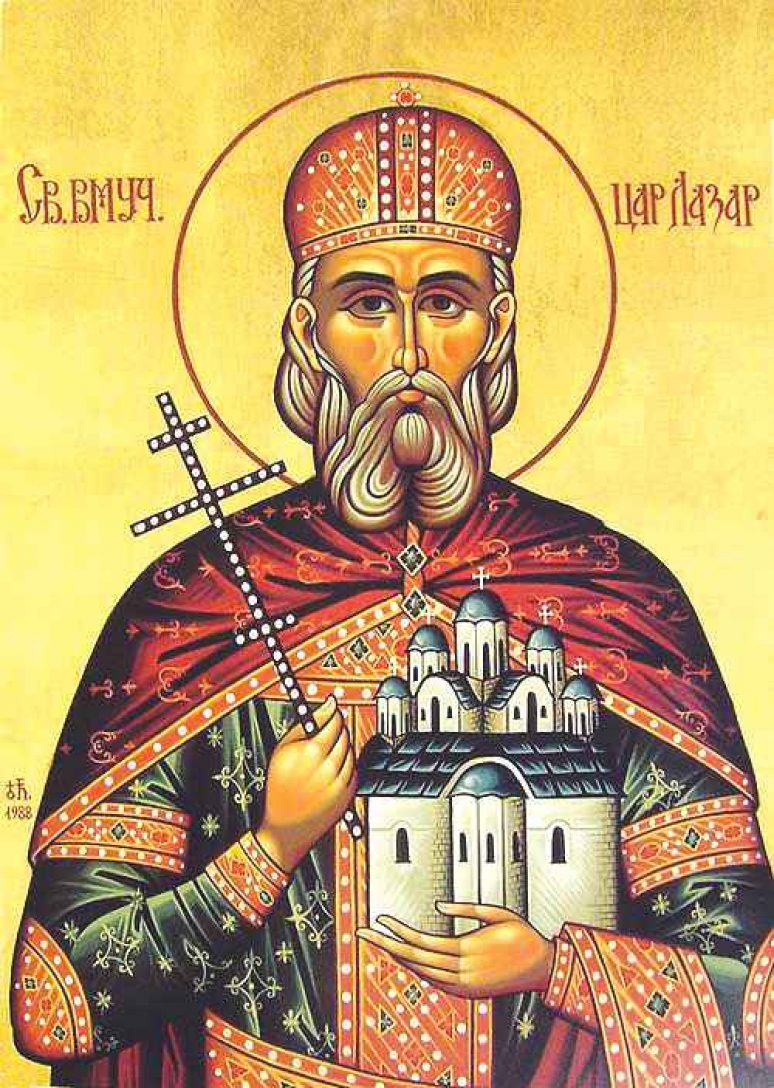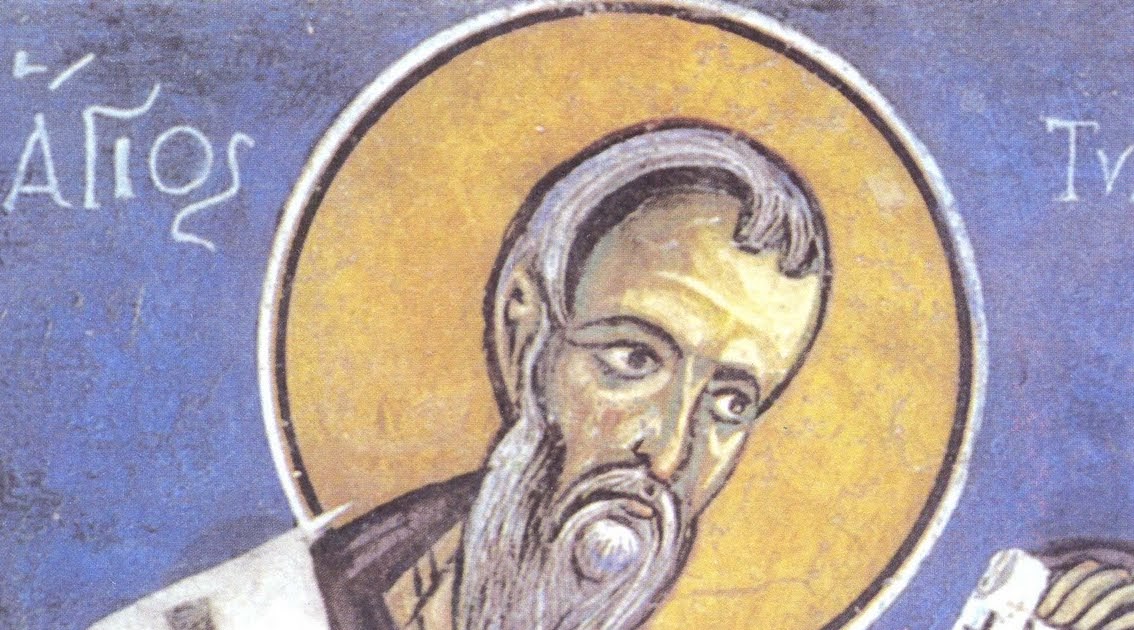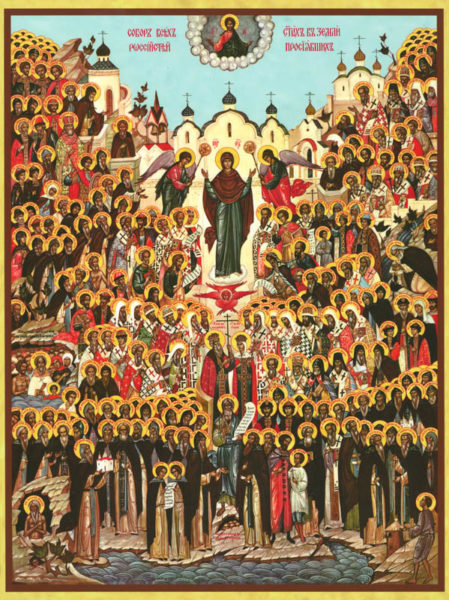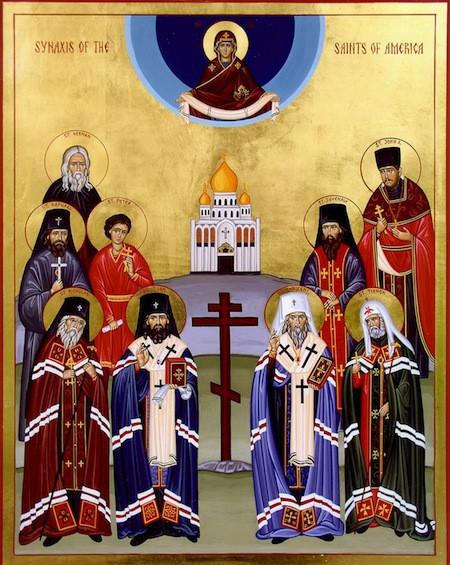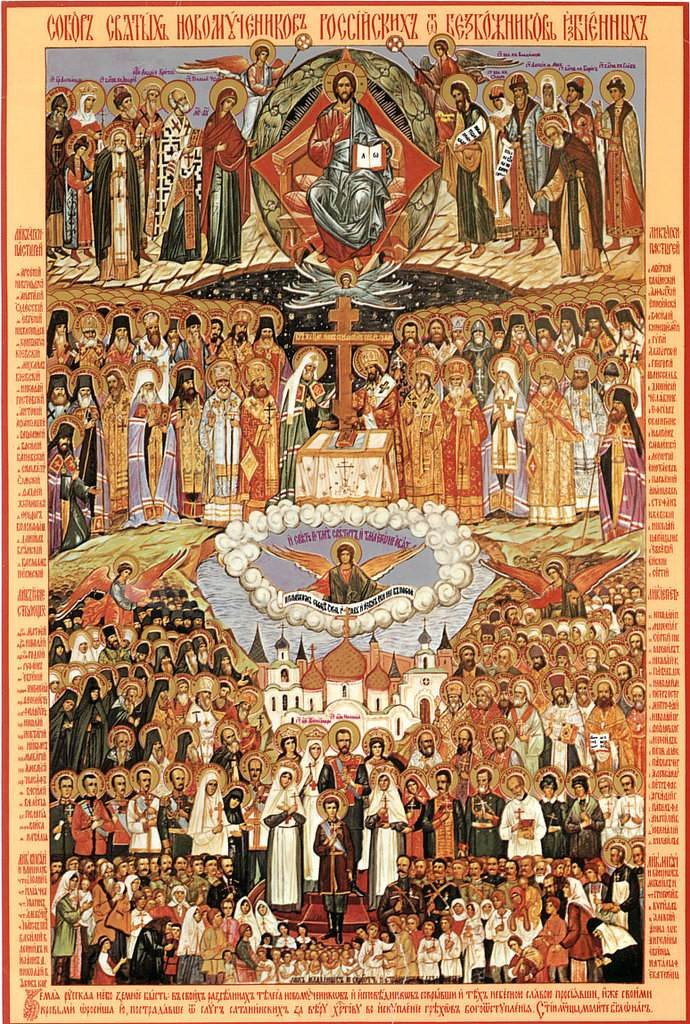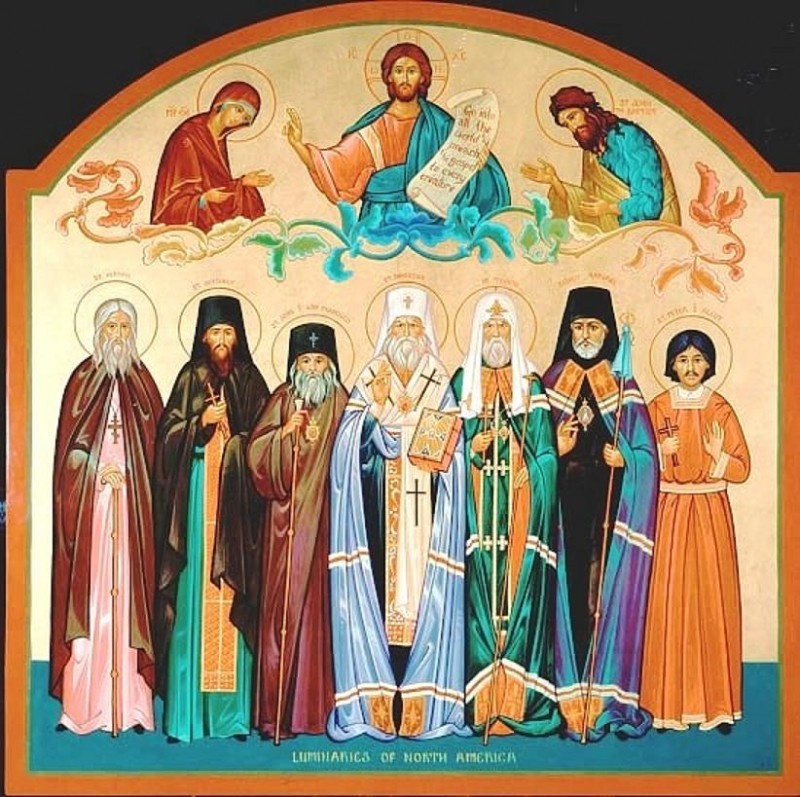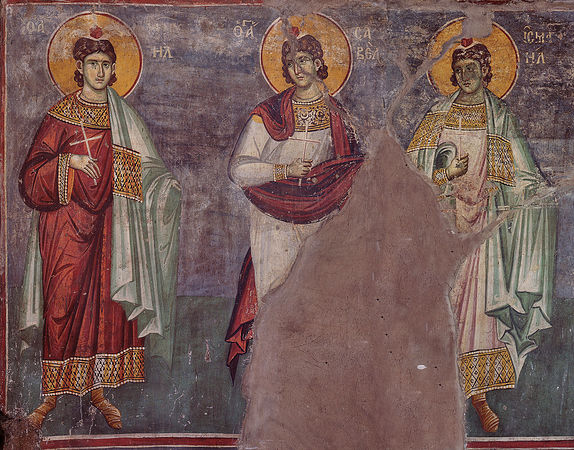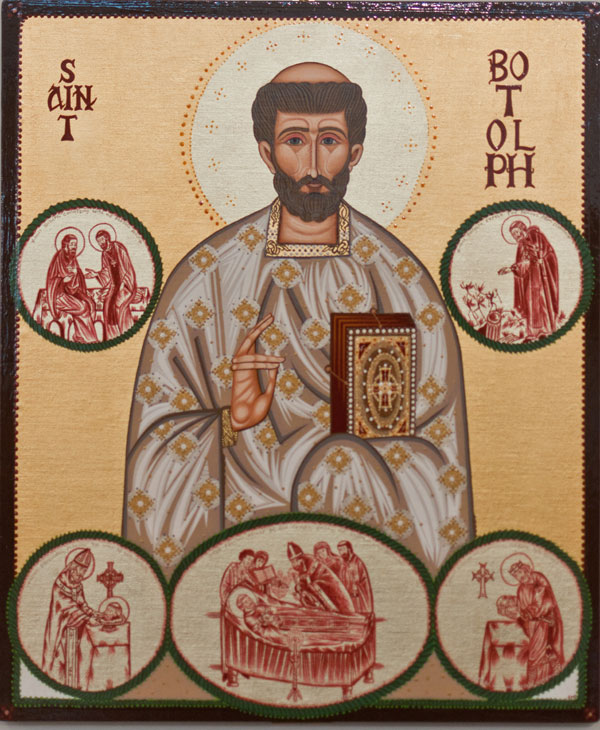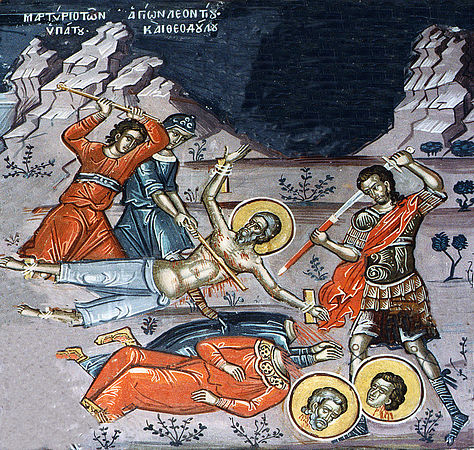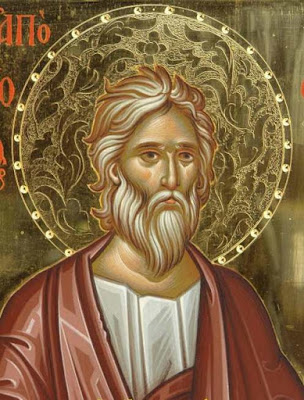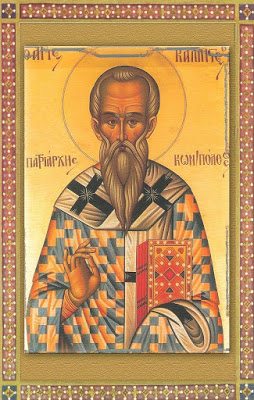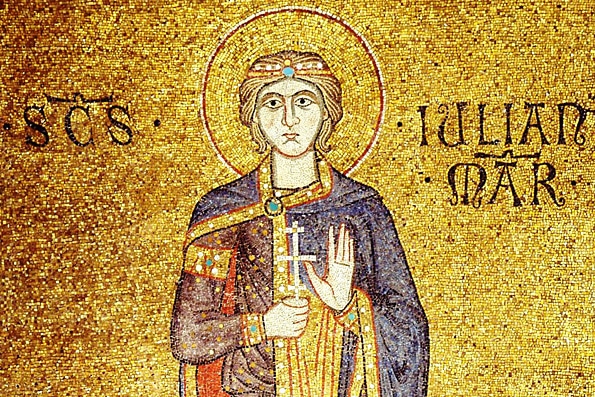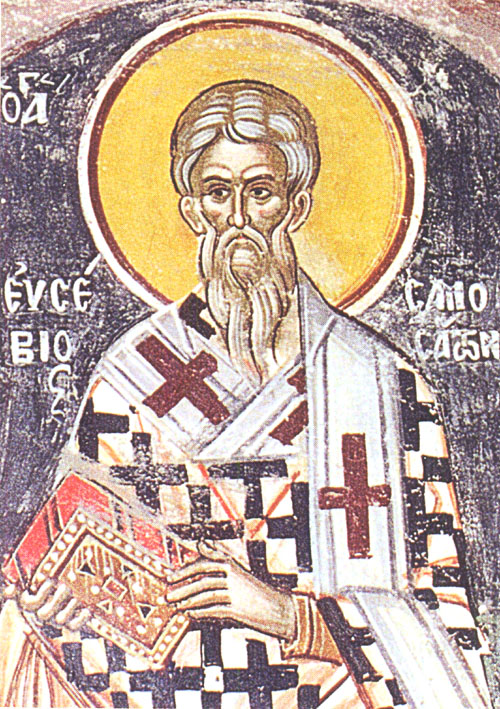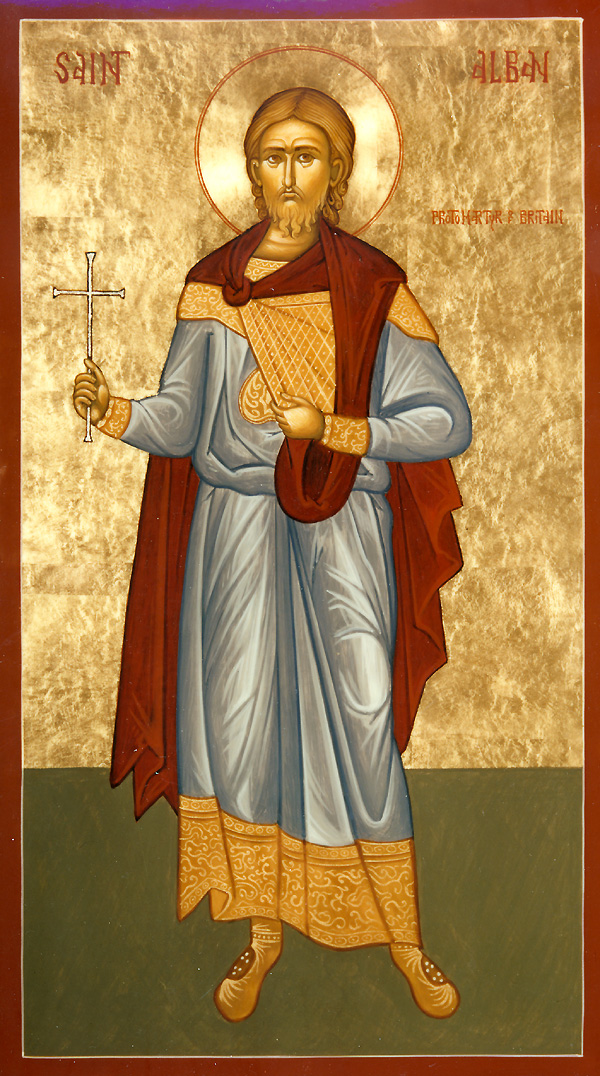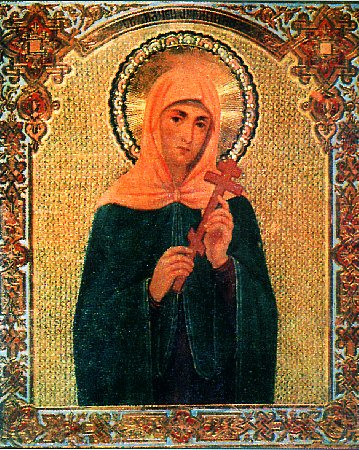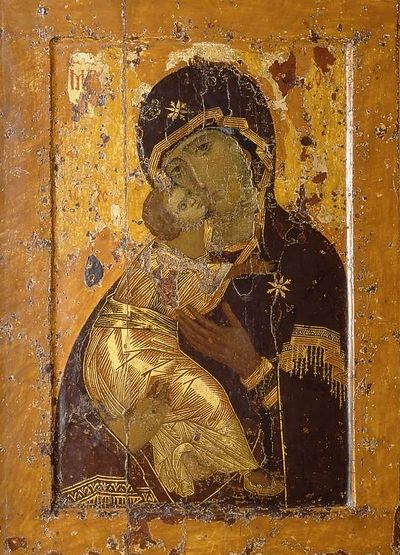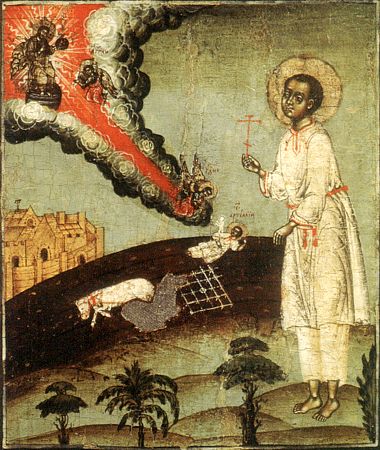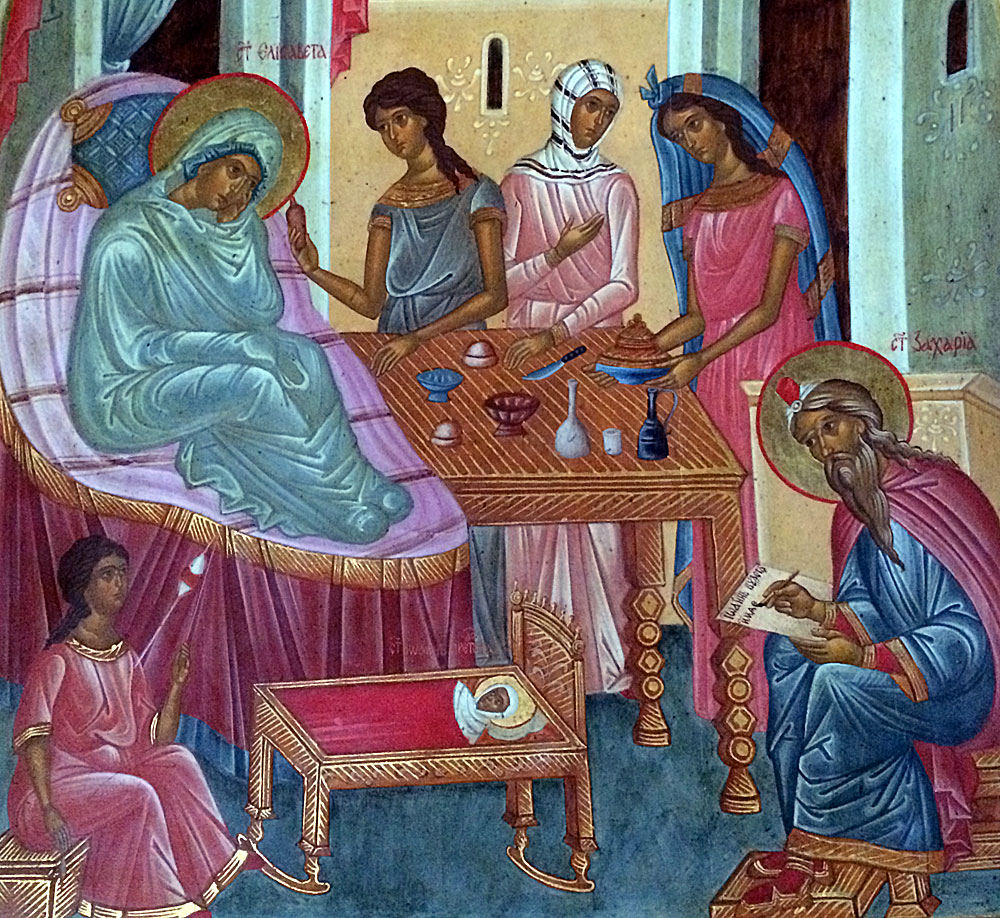- Dec 28, 2017
- 3,869
- 2,898
- Country
- United States
- Gender
- Male
- Faith
- Christian
- Marital Status
- Private
June 7
Lives of the Saints
3rd SUNDAY AFTER PENTECOST — Tone 2.
All Saints of Britain and Ireland. Ven. Thomas of Mt. Maleon (10th c.). Ven. Acacius of Sinai, who is mentioned in The Ladder (6th c.). Ven. Eudoxia, in monasticism Euphrosyne, Grand Duchess of Moscow (1407). Martyrs Peregrinus, Lucian, Ompeius, Hesychius, Papius, Saturninus, and Germanus, of Dyrrachium in Macedonia (2nd c.). Martyr Evangelus, Bishop of Tomi (Constanța) in Romania (3rd-4th c.). Martyr Cyriaca of Nicomedia (4th c.).
• Holy Pentecost
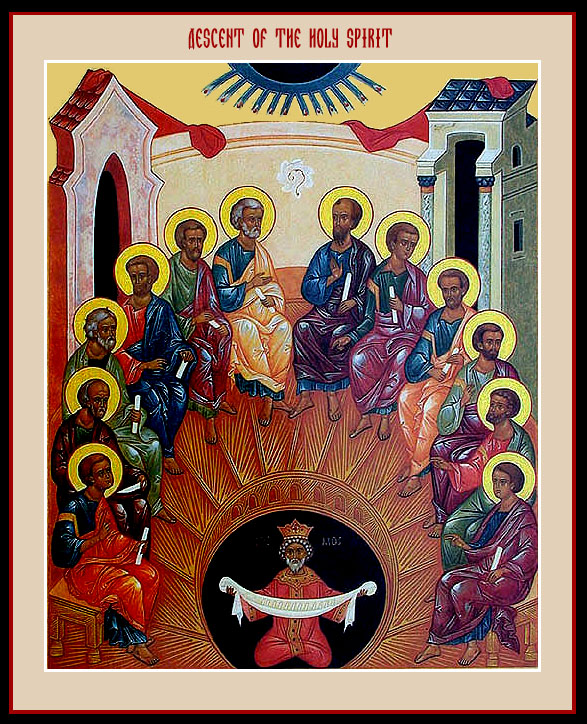
• Martyr Theodotus of Ancyra (303 AD.)
Martyr Theodotus of Ancyra, and with him the seven Virgin Martyrs: Alexandra, Tecusa, Claudia, Phaine, Euphraisa, Matrona, and Julia, who suffered under Decius
A secret Christian living in Ancyra, he would recover the bodies of the martyrs and give them honorable burial: it was he who buried the holy relics of the Virgin Martyrs Tecusa and her seven companions (May 8). When he was discovered by the pagan authorites, they seized him, tortured him and finally beheaded him.
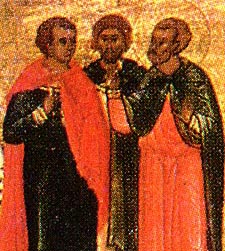
• Hieromartyr Marcellinus, pope of Rome (304 A.D.)
"When the Emperor Diocletian summoned him and threatened him with torture, he offered sacrifice to idols and was, because of this, rewarded by the Emperor with a costly garment. But Marcellinus repented bitterly and began to weep both day and night for his rejection of Christ, even as the Apostle Peter had before him. A synod of bishops was held at that time in Campania, and the Pope dressed himself in sackcloth and sprinkled ashes on his head, and, going before the Synod, confessed his sin and asked them to judge him. The fathers said: 'Let him judge himself.' Then he said: 'I strip myself of the sacerdotal rank of which I am not worthy; and, further, let my body not be buried after my death, but let it be thrown to the dogs.' Having said this, he pronounced a curse on any who should dare to bury him. He then went to the Emperor Diocletian and, casting the precious garment in front of him, confessed his faith in Christ and cursed the idols. The enraged Emperor ordered that he be tortured and killed outside the city, together with three other men: Claudius, Cyrinus and Antoninus. The bodies of these three were buried at once, but the Pope's body lay there for thirty-six days. Then St Peter appeared to Marcellus, the new Pope, and told him to bury Marcellinus' body, saying: 'Whoso humbleth himself shall be exalted.' " (Prologue)
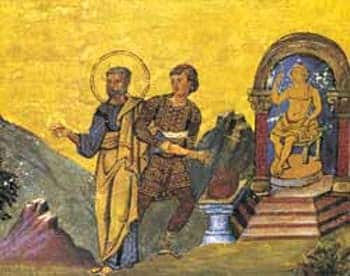
• St Daniel of Skete in Egypt (5th c.)
He was a disciple of St Arsenios the great and abbot of the Scetis in Egypt (the monastic system known as the "Skete" takes its name from Scetis). He lived the communal monastic life for forty years, then in 420 retired to the desert, where he remained until his repose.
From the Prologue: "A saint has a very sensitive conscience. What ordinary people may consider a small sin, a saint sees as a great crime. It is said of Abba Daniel that highwaymen attacked him on three occasions and took him off to the mountains. Twice he was rescued, but the third time, in attempting to escape, he struck one of them with a stone and killed him, and then made his escape. That murder lay on his conscience like a lead weight. In perplexity as to what he should do, he went to Timothy, the Patriarch of Alexandria, and asked his advice. The Patriarch soothed him, and released him from all penance. But his conscience continued to gnaw at him, and he went to Rome, to the Pope. The Pope gave him the same reply as had the Patriarch. Still dissatisfied, Daniel visited the remaining patriarchs in turn; going to Constantinople, Antioch and Jerusalem, confessing to each of them and asking for advice. But he could find no peace. So he returned home to Alexandria and declared himself to the authorities as a murderer, and was flung into prison. At his trial before the governor, Daniel told how everything had come about, and pleaded that he might be killed too, that his soul might be saved from eternal fire. The governor was amazed at the whole thing, and said to him: 'Go your way, Father, and pray to God for me, even if you kill seven more!' Still dissatisfied with this, Daniel resolved to take a leper into his cell and care for him until he died, and then find another. He did as he had resolved, and in this way brought peace to his conscience."
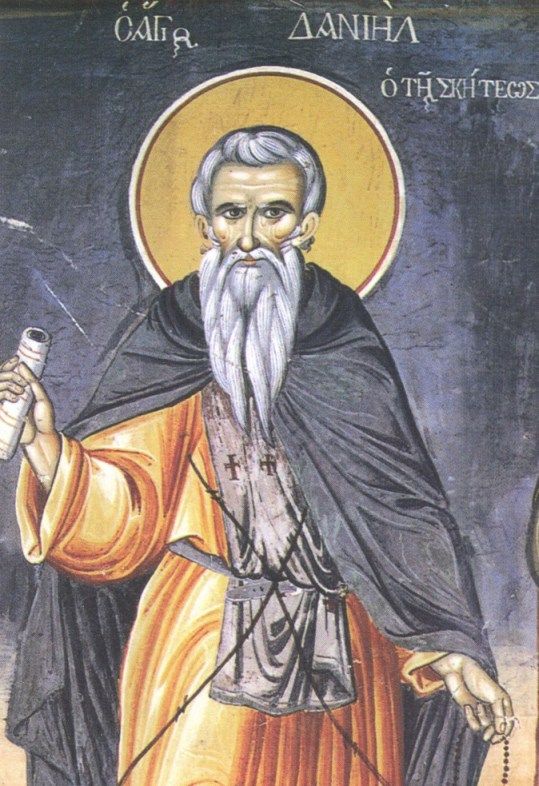
• Ven. Thomas of Mt. Maleon (10th c.)
Venerable Thomas of Mount Maleon
Saint Thomas of Mt. Maleon was a military commander before he became a monk. Strong and brave, he had participated in many battles, and brought victory to his countrymen, for which he gained glory and esteem. But, striving with all his heart towards God, Thomas abandoned the world and its honors, and he took monastic vows.
With great humility he visited monastic Elders, asking for guidance in the spiritual life. After several years Thomas received the blessing for solitary wilderness life and, led by a pillar of fire at night by the holy Prophet Elias, he settled on Mount Maleon (on the eastern part of Athos). Dwelling in complete seclusion, Saint Thomas fought with invisible enemies with as much courage as he had displayed against the visible enemies of his country.
The life and deeds of Saint Thomas could not be concealed from the surrounding area. People began to flock to him seeking spiritual guidance, and even those suffering from sickness, since he received from God the blessing to heal infirmities.
Many believers received help through the prayers of the holy monk. Even after his death, he does not cease to heal those who seek his aid, from every passion and sickness.
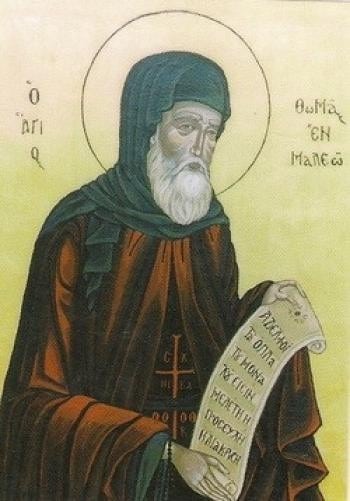
• Ven. Acacius of Sinai, who is mentioned in The Ladder (6th c.).
Venerable Acacius of Sinai, who is mentioned in the Ladder
Saint Acacius of Sinai lived during the sixth century and was a novice at a certain monastery in Asia. The humble monk distinguished himself by his patient and unquestioning obedience to his Elder, a harsh and dissolute man. He forced his disciple to toil excessively, starved him with hunger, and beat him without mercy. Despite such treatment, Saint Acacius meekly endured the affliction and thanked God for everything. Saint Acacius died after suffering these torments for nine years.
Five days after Acacius was buried, his Elder told another Elder about the death of his disciple. The second Elder did not believe that the young monk was dead. They went to the grave of Acacius and the second Elder called out: “Brother Acacius, are you dead?” From the grave a voice replied, “No, Father, how is it possible for an obedient man to die?” The startled Elder of Saint Acacius fell down with tears before the grave, asking forgiveness of his disciple.
After this he repented, constantly saying to the Fathers, “I have committed murder.” He lived in a cell near the grave of Saint Acacius, and he ended his life in prayer and in meekness. Saint John Climacus (March 30) mentions Saint Acacius in THE LADDER (Step 4:110) as an example of endurance and obedience, and of the rewards for these virtues.
Saint Acacius is also commemorated on November 29.
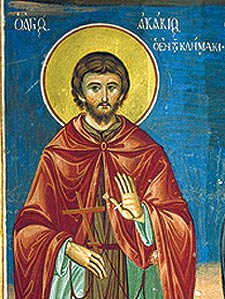
• Ven. Eudoxia, in monasticism Euphrosyne, Grand Duchess of Moscow (1407 A.D.)
Venerable Eudokia (in monasticism Euphrosyne), Grand Duchess of Moscow
Saint Euphrosyne, in the world Eudokia, was the daughter of the Suzdal prince Demetrius Constantovich (+ 1383), and from 1367 was the wife of the Moscow Great Prince Demetrius of the Don. Their happy union was for Russia a pledge of unity and peace between Moscow and Suzdal.
Saint Alexis, Metropolitan of Moscow, and even Saint Sergius of Radonezh, who baptized one of the sons of Demetrius and Eudokia, had a great influence upon the spiritual life of Princess Eudokia. Saint Demetrius of Priluki (February 11) was the godfather of another son.
The holy princess was a builder of churches. In 1387 she founded the Ascension women’s monastery in the Moscow Kremlin. In 1395, during Tamerlane’s invasion into the southern regions of Russia, the Vladimir Icon of the Mother of God was transferred to Moscow upon her advice, miraculously defending the Russian land. During Lent, the princess secretly wore chains beneath her splendid royal garb. By her patronage the famous icon of the Archangel Michael was painted, and later became the patronal icon of the Kremlin’s Archangel Cathedral.
After raising five sons (a sixth died in infancy), the princess was tonsured as a nun with the name Euphrosyne. She completed her earthly journey on July 7, 1407 and was buried in the Ascension monastery she founded.
An old Russian church poem has survived, the lament of the princess for her husband, who had died at the age of thirty-nine.
Saint Euphrosyne is also commemorated on May 17.
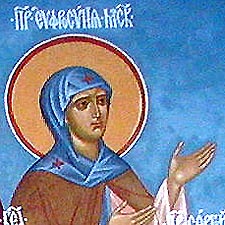
• Martyrs Peregrinus, Lucian, Ompeius, Hesychius, Papius, Saturninus, and Germanus, of Dyrrachium in Macedonia (2nd c.)
Martyrs Peregrinus, Lucian, Ompeius, Hesychius, Papius, Saturninus, and Germanus, of Dyrrachium in Macedonia
The Holy Martyrs Peregrinus, Lucian, Pompeius, Hesychius, Papius, Saturninus and Germanus were natives of Italy. They suffered for Christ under the emperor Trajan in the city of Dyrrachium, located at the shore of the Adriatic sea.
Witnessing the martyrdom of Bishop Astius, who was crucified by the Romans, they openly praised the courage and firmness of the holy confessor. Because of this, they were seized, and as confessors of faith in Christ, they were drowned in the sea. Their bodies, carried to shore by the waves, were hidden in the sand by Christians. The martyrs appeared to the Bishop of Alexandria ninety years later, ordering him to bury their bodies and to build a church over them.
• Martyr Evangelus, Bishop of Tomi (Constanța) in Romania (3rd-4th c.).
Martyr Evangelicus, Bishop of Tomis, Constanța in Romania
Saint Evangelicus, a follower of the holy Apostle Andrew (November 30), is the first known bishop of the diocese of Tomis (Constanța, pronounced: Constantsa) in Dacia Pontica (Lesser Scythia, or Dobrogea). He was active around the mouths of the Danube toward the end of the third century.
Bishop Evangelicus converted many pagans of Dacia Pontica to Christianity. He is mentioned in the account of the martyrdom of Saints Epictetus and Astion (July 8), where he is described as the founder of churches in the province. The parents of these holy martyrs were baptized by Saint Evangelicus after being converted by the priest Bonosus.
It is believed that Saint Evangelicus suffered martyrdom during the persecution of Diocletian (284-305).
.
Lives of the Saints
3rd SUNDAY AFTER PENTECOST — Tone 2.
All Saints of Britain and Ireland. Ven. Thomas of Mt. Maleon (10th c.). Ven. Acacius of Sinai, who is mentioned in The Ladder (6th c.). Ven. Eudoxia, in monasticism Euphrosyne, Grand Duchess of Moscow (1407). Martyrs Peregrinus, Lucian, Ompeius, Hesychius, Papius, Saturninus, and Germanus, of Dyrrachium in Macedonia (2nd c.). Martyr Evangelus, Bishop of Tomi (Constanța) in Romania (3rd-4th c.). Martyr Cyriaca of Nicomedia (4th c.).
• Holy Pentecost
• Martyr Theodotus of Ancyra (303 AD.)
Martyr Theodotus of Ancyra, and with him the seven Virgin Martyrs: Alexandra, Tecusa, Claudia, Phaine, Euphraisa, Matrona, and Julia, who suffered under Decius
A secret Christian living in Ancyra, he would recover the bodies of the martyrs and give them honorable burial: it was he who buried the holy relics of the Virgin Martyrs Tecusa and her seven companions (May 8). When he was discovered by the pagan authorites, they seized him, tortured him and finally beheaded him.
• Hieromartyr Marcellinus, pope of Rome (304 A.D.)
"When the Emperor Diocletian summoned him and threatened him with torture, he offered sacrifice to idols and was, because of this, rewarded by the Emperor with a costly garment. But Marcellinus repented bitterly and began to weep both day and night for his rejection of Christ, even as the Apostle Peter had before him. A synod of bishops was held at that time in Campania, and the Pope dressed himself in sackcloth and sprinkled ashes on his head, and, going before the Synod, confessed his sin and asked them to judge him. The fathers said: 'Let him judge himself.' Then he said: 'I strip myself of the sacerdotal rank of which I am not worthy; and, further, let my body not be buried after my death, but let it be thrown to the dogs.' Having said this, he pronounced a curse on any who should dare to bury him. He then went to the Emperor Diocletian and, casting the precious garment in front of him, confessed his faith in Christ and cursed the idols. The enraged Emperor ordered that he be tortured and killed outside the city, together with three other men: Claudius, Cyrinus and Antoninus. The bodies of these three were buried at once, but the Pope's body lay there for thirty-six days. Then St Peter appeared to Marcellus, the new Pope, and told him to bury Marcellinus' body, saying: 'Whoso humbleth himself shall be exalted.' " (Prologue)

• St Daniel of Skete in Egypt (5th c.)
He was a disciple of St Arsenios the great and abbot of the Scetis in Egypt (the monastic system known as the "Skete" takes its name from Scetis). He lived the communal monastic life for forty years, then in 420 retired to the desert, where he remained until his repose.
From the Prologue: "A saint has a very sensitive conscience. What ordinary people may consider a small sin, a saint sees as a great crime. It is said of Abba Daniel that highwaymen attacked him on three occasions and took him off to the mountains. Twice he was rescued, but the third time, in attempting to escape, he struck one of them with a stone and killed him, and then made his escape. That murder lay on his conscience like a lead weight. In perplexity as to what he should do, he went to Timothy, the Patriarch of Alexandria, and asked his advice. The Patriarch soothed him, and released him from all penance. But his conscience continued to gnaw at him, and he went to Rome, to the Pope. The Pope gave him the same reply as had the Patriarch. Still dissatisfied, Daniel visited the remaining patriarchs in turn; going to Constantinople, Antioch and Jerusalem, confessing to each of them and asking for advice. But he could find no peace. So he returned home to Alexandria and declared himself to the authorities as a murderer, and was flung into prison. At his trial before the governor, Daniel told how everything had come about, and pleaded that he might be killed too, that his soul might be saved from eternal fire. The governor was amazed at the whole thing, and said to him: 'Go your way, Father, and pray to God for me, even if you kill seven more!' Still dissatisfied with this, Daniel resolved to take a leper into his cell and care for him until he died, and then find another. He did as he had resolved, and in this way brought peace to his conscience."

• Ven. Thomas of Mt. Maleon (10th c.)
Venerable Thomas of Mount Maleon
Saint Thomas of Mt. Maleon was a military commander before he became a monk. Strong and brave, he had participated in many battles, and brought victory to his countrymen, for which he gained glory and esteem. But, striving with all his heart towards God, Thomas abandoned the world and its honors, and he took monastic vows.
With great humility he visited monastic Elders, asking for guidance in the spiritual life. After several years Thomas received the blessing for solitary wilderness life and, led by a pillar of fire at night by the holy Prophet Elias, he settled on Mount Maleon (on the eastern part of Athos). Dwelling in complete seclusion, Saint Thomas fought with invisible enemies with as much courage as he had displayed against the visible enemies of his country.
The life and deeds of Saint Thomas could not be concealed from the surrounding area. People began to flock to him seeking spiritual guidance, and even those suffering from sickness, since he received from God the blessing to heal infirmities.
Many believers received help through the prayers of the holy monk. Even after his death, he does not cease to heal those who seek his aid, from every passion and sickness.

• Ven. Acacius of Sinai, who is mentioned in The Ladder (6th c.).
Venerable Acacius of Sinai, who is mentioned in the Ladder
Saint Acacius of Sinai lived during the sixth century and was a novice at a certain monastery in Asia. The humble monk distinguished himself by his patient and unquestioning obedience to his Elder, a harsh and dissolute man. He forced his disciple to toil excessively, starved him with hunger, and beat him without mercy. Despite such treatment, Saint Acacius meekly endured the affliction and thanked God for everything. Saint Acacius died after suffering these torments for nine years.
Five days after Acacius was buried, his Elder told another Elder about the death of his disciple. The second Elder did not believe that the young monk was dead. They went to the grave of Acacius and the second Elder called out: “Brother Acacius, are you dead?” From the grave a voice replied, “No, Father, how is it possible for an obedient man to die?” The startled Elder of Saint Acacius fell down with tears before the grave, asking forgiveness of his disciple.
After this he repented, constantly saying to the Fathers, “I have committed murder.” He lived in a cell near the grave of Saint Acacius, and he ended his life in prayer and in meekness. Saint John Climacus (March 30) mentions Saint Acacius in THE LADDER (Step 4:110) as an example of endurance and obedience, and of the rewards for these virtues.
Saint Acacius is also commemorated on November 29.
• Ven. Eudoxia, in monasticism Euphrosyne, Grand Duchess of Moscow (1407 A.D.)
Venerable Eudokia (in monasticism Euphrosyne), Grand Duchess of Moscow
Saint Euphrosyne, in the world Eudokia, was the daughter of the Suzdal prince Demetrius Constantovich (+ 1383), and from 1367 was the wife of the Moscow Great Prince Demetrius of the Don. Their happy union was for Russia a pledge of unity and peace between Moscow and Suzdal.
Saint Alexis, Metropolitan of Moscow, and even Saint Sergius of Radonezh, who baptized one of the sons of Demetrius and Eudokia, had a great influence upon the spiritual life of Princess Eudokia. Saint Demetrius of Priluki (February 11) was the godfather of another son.
The holy princess was a builder of churches. In 1387 she founded the Ascension women’s monastery in the Moscow Kremlin. In 1395, during Tamerlane’s invasion into the southern regions of Russia, the Vladimir Icon of the Mother of God was transferred to Moscow upon her advice, miraculously defending the Russian land. During Lent, the princess secretly wore chains beneath her splendid royal garb. By her patronage the famous icon of the Archangel Michael was painted, and later became the patronal icon of the Kremlin’s Archangel Cathedral.
After raising five sons (a sixth died in infancy), the princess was tonsured as a nun with the name Euphrosyne. She completed her earthly journey on July 7, 1407 and was buried in the Ascension monastery she founded.
An old Russian church poem has survived, the lament of the princess for her husband, who had died at the age of thirty-nine.
Saint Euphrosyne is also commemorated on May 17.
• Martyrs Peregrinus, Lucian, Ompeius, Hesychius, Papius, Saturninus, and Germanus, of Dyrrachium in Macedonia (2nd c.)
Martyrs Peregrinus, Lucian, Ompeius, Hesychius, Papius, Saturninus, and Germanus, of Dyrrachium in Macedonia
The Holy Martyrs Peregrinus, Lucian, Pompeius, Hesychius, Papius, Saturninus and Germanus were natives of Italy. They suffered for Christ under the emperor Trajan in the city of Dyrrachium, located at the shore of the Adriatic sea.
Witnessing the martyrdom of Bishop Astius, who was crucified by the Romans, they openly praised the courage and firmness of the holy confessor. Because of this, they were seized, and as confessors of faith in Christ, they were drowned in the sea. Their bodies, carried to shore by the waves, were hidden in the sand by Christians. The martyrs appeared to the Bishop of Alexandria ninety years later, ordering him to bury their bodies and to build a church over them.
• Martyr Evangelus, Bishop of Tomi (Constanța) in Romania (3rd-4th c.).
Martyr Evangelicus, Bishop of Tomis, Constanța in Romania
Saint Evangelicus, a follower of the holy Apostle Andrew (November 30), is the first known bishop of the diocese of Tomis (Constanța, pronounced: Constantsa) in Dacia Pontica (Lesser Scythia, or Dobrogea). He was active around the mouths of the Danube toward the end of the third century.
Bishop Evangelicus converted many pagans of Dacia Pontica to Christianity. He is mentioned in the account of the martyrdom of Saints Epictetus and Astion (July 8), where he is described as the founder of churches in the province. The parents of these holy martyrs were baptized by Saint Evangelicus after being converted by the priest Bonosus.
It is believed that Saint Evangelicus suffered martyrdom during the persecution of Diocletian (284-305).
.
Last edited:
Upvote
0

